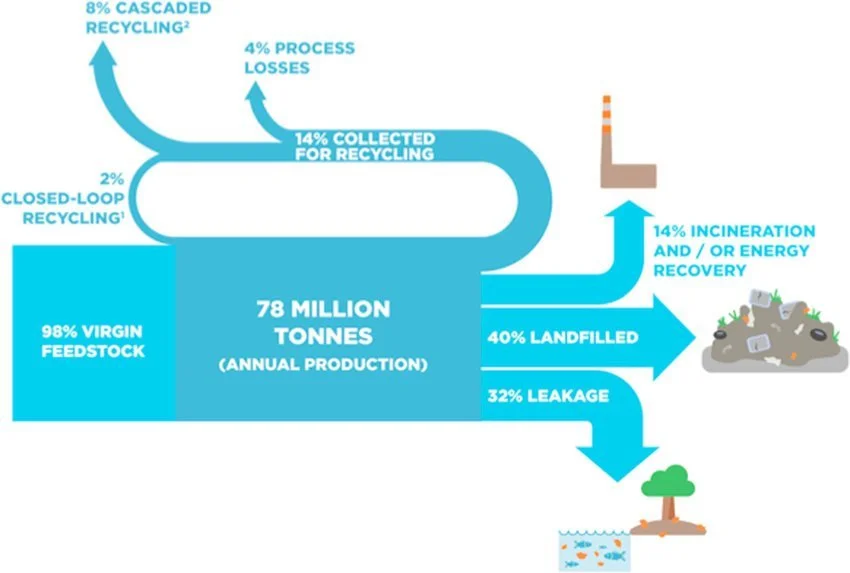Plastics Economy Part 2: The Future of Plastics
2018 so far seems to be THE year to have discussions around plastic. Now more than ever we are bombarded with information that impedes factual and informed decision making and people and businesses alike are increasingly exposed to swift judgement online regarding their sustainability practices (or lack thereof).
Single-use plastic is an issue. We can’t deny it. It is almost entirely about convenience, but we also need to acknowledge the many benefits that plastic does bring to our lives such as protecting food and making cars lighter. What we need is improvements made to the way items are designed and the systems for managing those materials after use. Many types of plastic aren’t recyclable in Australia or are difficult to recycle due to the way they were designed or made but 50% of these could be profitably recycled if we had the resources to do so.
30% of plastic packaging (by weight) is currently – by design – destined for landfill, incineration or energy recovery. Those little things such as lolly wrappers, sachets, and what we typically get our take-away food in are only used once and cannot be recycled economically.
We need a rethink to the current plastics system and design solutions that when created and used, keep plastics in use in the economy for longer and out of the environment or landfill.
The externalities related to the use of plastic and single use packaging are concentrated in three main areas: the degradation of natural systems due to leakage, in particular the ocean; greenhouse gas emissions resulting from production and after-use incineration; and health and environmental impacts from substances of concern. Valuing Plastic , a report by UN Environment Programme and the Plastics Disclosure Project (PDP) based on research by Trucost estimated the total natural capital cost of plastics in the consumer goods industry at USD 75 billion, of which USD 40 billion was related to plastic packaging. If production and use continue in the current linear model, the negative consequences will be exacerbated. We can’t continue with the ‘business as usual’ scenario any longer.
Countries, key industry players and businesses need to lead by example and collaborate on creating an effective after-use plastics economy by improving recycling technology and its uptake, designing items for reuse and creating controlled biodegrading capability (bioplastics is a whole other topic for another time).
Innovation with how we design, use and recover plastics should dramatically reduce leakage into natural systems. While we continue to develop emerging technologies, even with improvements to the current technologies and systems we can at least partially realise the benefits of a circular model just by changing how we design products to be used. There are pockets of opportunity and areas of improvement available to businesses and consumers that even on a small scale can be put in place today.
The time to act is now.
So, what can you do?
When making choices for yourself or as a business – look for alternatives, consider the product's longevity and lifecycle or ways it could be used as something else after it’s no longer suitable for its primary use. If you’re designing a product, keep in mind what resources you are using to create it and where it will end up.
Small actions can lead to big changes. Plastic will likely always be in our lives in some shape or another but how we use it doesn’t have to stay the same.
- Christie


